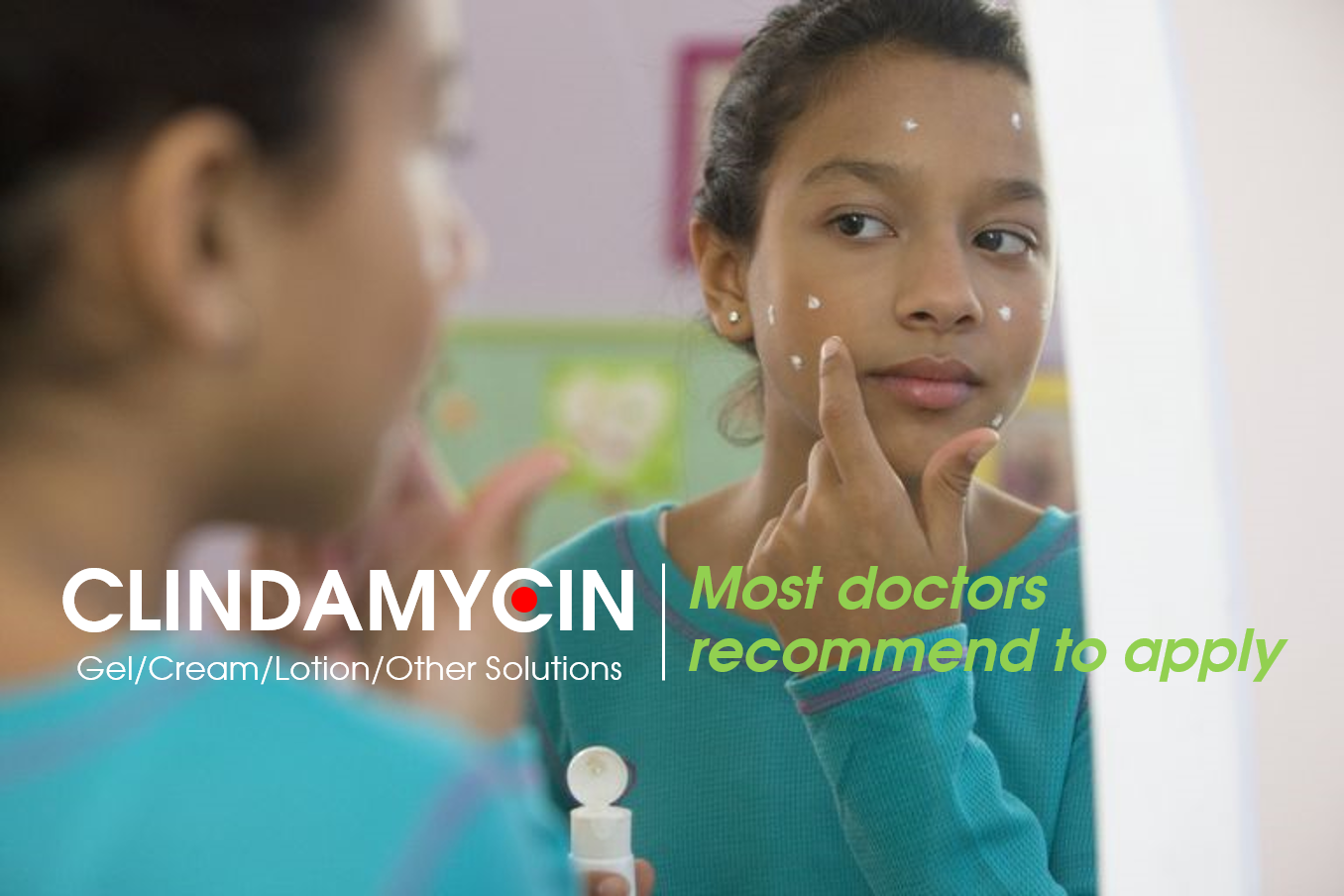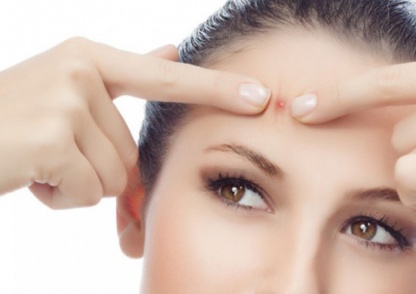Clindamycin & Acne – Overall Benefits
Clindamycin is one of the leading prescription treatments for acne. Its oral and gel forms are both explored in this article.
One of the most important factors in controlling acne is reducing the amount of bacteria on your skin.
Generally, bacteria are controlled simply by washing your face every day with a formulated facial cleanser. But when that alone isn't enough, many doctors prescribe antibiotics (bacteria killers) to control acne outbreaks.
Antibiotics are proven to be effective at reducing acne. While there are many different types of antibiotics, one of the most commonly prescribed antibiotics is clindamycin for acne.

Source: Internet
Bacteria are controlled simply by washing your face every day with a formulated facial cleanser. But when that alone isn't enough.
What is Clindamycin?
Clindamycin is an antibiotic that doctors may use to cure your acne. It falls under the class of lincosamide antibiotics, named after the bacteria it was discovered from.
Most antibiotics are used to treat a variety of bacterial infections, not just acne. Clindamycin is no different. It's considered a narrow spectrum antibiotic, so it is not used for as many infections as a broad spectrum antibiotic (the type of infection must be known for clindamycin to be prescribed), but does treat a variety of conditions including:
- Staph infection
- Strep throat
- Periodontal diseases
- Malaria
Clindamycin may also be prescribed to treat anaerobic bacteria – bacteria that does not need oxygen to thrive. It may be used in place of penicillin in some cases, although this is less common because of the different mechanism of action.
Yet despite these other uses, many doctors prescribe clindamycin for acne.

Source: Internet
Many doctors prescribe clindamycin for acne.
Clindamycin For Acne Treatment
Clindamycin is one of the most popular antibiotics for acne. Interestingly, of all of the acne antibiotics, clindamycin is more commonly prescribed as a topical treatment.
Oral clindamycin for acne, but it's incredibly uncommon. That is because some studies have shown that taken clindamycin orally can increase the risk of a very serious side effect, while topically (although the risk still exists) the side effects are less common. Far more people suffering from acne use the topical version of clindamycin, often in a gel form.
A study published in 1984 compared topical clindamycin with oral tetracycline, which is one of the most common oral agents for acne. They found that clindamycin was not only effective at clearing up acne – it was actually more effective than tetracycline, and most users found no serious side effects for their skin.
Most research has shown that by week 8, users of clindamycin tend to report significant improvements in their acne when compared to placebo. Both pustule and papule counts tend to be lower.
However, research has shown that topical clindamycin for acne is even more effective when it is combined with benzoyl peroxide. A combination of the two acne treatments was dubbed "Significantly Superior" than either acne treatment individually, according to researchers at the Department of Medicine in Pennsylvania State University. It appears to be more effective than a similar combination of erythromycin and benzoyl peroxide as well.
Thus most doctors recommend using the combination treatment of benzoyl peroxide and clindamycin gel for acne, as this has been shown to improve overall efficacy.
Resistance Risk for Acne and Clindamycin
All antibiotics share a similar risk, and that is that bacteria can become resistant/immune to the effects of the medicines.
Clindamycin is no different. Bacterial resistance is a common problem with clindamycin. Even if the medicine works extremely well and is taken exactly as directed, there is the possibility that the bacteria will become immune to its effects.
When this occurs, acne will almost always grow back, and you can no longer use clindamycin for acne treatment. Doctors will often have to prescribe a new type of antibiotic.
Some degree of resistance is likely the longer you take the medication. However, you can control the likelihood of this resistance by taking clindamycin exactly as directed. Using the medication on and off will vastly decrease its efficacy over time. Make sure that you're following your doctor's advice to the letter, because any deviation can increase resistance risk.
Luckily, of all antibiotics, clindamycin does appear to take longer for acne to grow resistant. While no studies have yet been completed with specific resistance risk, most users report that on average their acne stayed clear for as long as 6 months to a year or longer, while other antibiotics often grow weaker within six months.
Whether this is due to the addition of benzoyl peroxide is less clear.
Still, it would be wise not to expect clindamycin to work forever. Very few antibiotics are able to continue to fight acne – or any bacteria – indefinitely, which is why it's always important to get a doctor's prescription before using any of these types of drugs.
Side Effects of Clindamycin For Acne
Recall that when it comes to acne and clindamycin, most doctors prescribe topical treatments. One of the main reasons for this is because of the side effects of oral clindamycin.
Most side effects of clindamycin are fairly easy to handle. Roughly 1% of clindamycin users will develop nausea, diarrhea, vomiting, and cramps. Often this is due to the way that clindamycin disrupts intestinal health.
Within the intestine there are millions of good bacteria. Antibiotics like clindamycin do not know how to differentiate between good and bad bacteria, and can kill off too many good bacteria leaving the bad bacteria to flourish.
While those side effects are generally tolerated, doctors are often worried about a health issue known as pseudomembranous colitis. This is when one specific "bad" bacteria in the colon, known as clostridium difficile, causes an infection after the good bacteria is wiped out. Clostridium difficile is immune to clindamycin, and it's possible that it will start to overgrow when taking the clindamycin medication.
The condition can be very dangerous – possibly even deadly – and leading to severe nausea, stomach cramps, and more. That is why clindamycin oral is not generally used as an acne treatment.
However, it is possible for topical clindamycin to cause the same problem. It is much more rare (because less of the antibiotic is absorbed through the skin) but doctors have reported that there are cases of pseudomembranous colitis that appear to relate back to topical clindamycin use. That is why you should always talk to your doctor if you experience any side effects while taking clindamycin.
Also, in very rare cases, clindamycin has been linked to liver toxicity, severe allergic reaction, and jaundice, but this is far less common.
It is recommended that you do not lie down within 30 minutes of taking clindamycin, as this appears to increase the risk of stomach discomfort, including heartburn which can last for several days.
Side Effects of Topical Clindamycin
Topical clindamycin for acne tends to have fewer side effects.
The most common is skin dryness and peeling, which may occur as a result of benzoyl peroxide as well.
Skin redness and irritation may also be the sign of an allergic reaction.
The side effects of oral clindamycin may also occur, but because there is less absorption this tends to be very rare. Always tell your doctor if you are using any other medications to ensure that there are no interactions with your clindamycin treatment.
General Dosing of Clindamycin For Acne Treatment
Always follow your doctor's instructions when it comes to your prescription drug dose, especially with antibiotics where improper dosing can lead to bacterial resistance.
When given as an oral drug, clindamycin is usually dosed at 150 to 450 mg roughly 2 to 4 times per day depending on the type and degree of injection.
However, since clindamycin for acne usually comes in topical form (rather than oral form), most doctors recommend that you apply the clindamycin cream, lotions, and other thicker solutions twice per day. Clindamycin foam may be prescribed once or twice per day, depending on the brand.
Never use clindamycin without knowing exactly what doses your doctor recommends.

Source: Internet
Most doctors recommend that you apply the clindamycin cream, lotions, and other thicker solutions
Clindamycin and Acne – Overall Benefits/
Compared to other available antibiotics, clindamycin (especially clindamycin gel) may be a preferred choice. As a topical cream/solution, it is less likely to have side effects that can interfere with your health. It also tends to be well tolerated and less likely to become resistant.
Studies have shown that clindamycin is an effective choice for clearing up acne.
It is not necessarily beneficial for acne scarring, however, and no antibiotic can be guaranteed to clear up all of your acne due the constant presence of bacteria on the skin. In addition, because you are at risk of developing resistance to clindamycin, you should not expect it to provide a permanent cure. Also, it's important to be aware of how you feel after using clindamycin, because side effects are possible and some rare side effects can be dangerous.
Nevertheless, compared to other prescription acne medications, topical clindamycin tends to fare well, and may be a worthwhile acne treatment to try.
Source
http://www.ncbi.nlm.nih.gov/pubmed/6242073
http://www.sciencedirect.com/science/article/pii/S0190962297701774
http://archderm.jamanetwork.com/article.aspx?articleid=542347
(Source: http://www.progressivehealth.com/clindamycin-gel-acne.htm)










